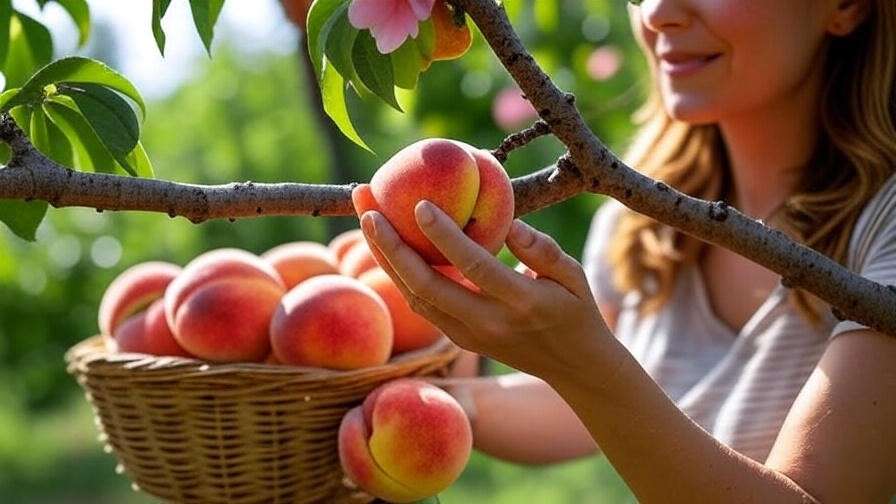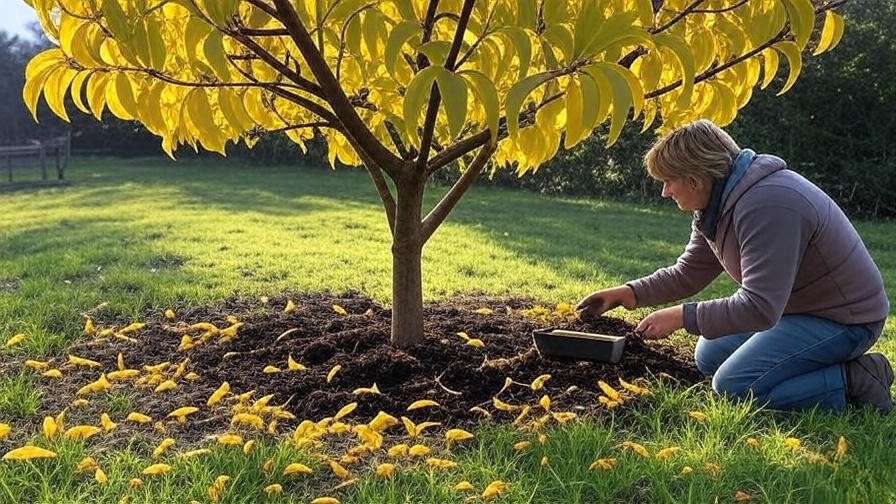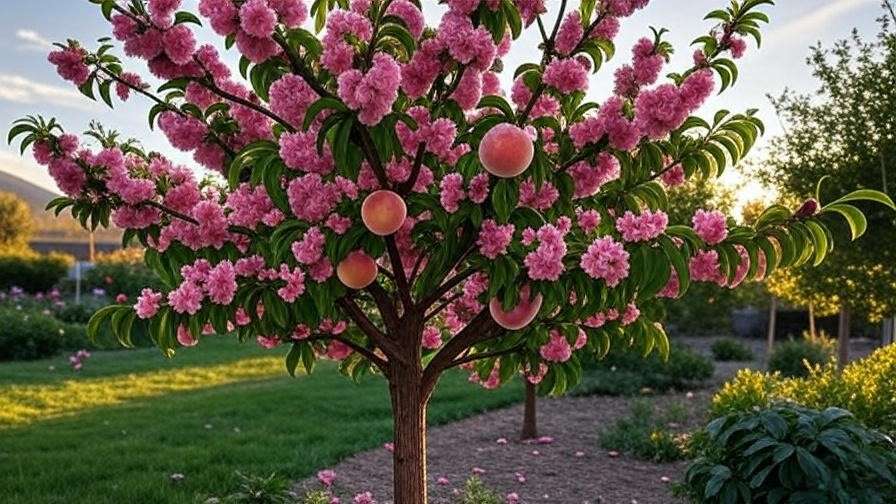Imagine sinking your teeth into a juicy, sun-warmed Belle of Georgia peach, its sweet, white flesh bursting with flavor that transports you to a warm summer day in the South. This heirloom peach variety, cherished for over a century, is a favorite among home gardeners and orchard enthusiasts for its delicious fruit and stunning spring blossoms. Whether you’re a beginner or a seasoned grower, mastering Belle of Georgia peach tree care can transform your backyard into a fruitful paradise. In this comprehensive guide, we’ll walk you through every step—from planting to harvesting—to ensure your tree thrives and delivers abundant, mouthwatering peaches. With expert-backed tips and practical advice, you’ll learn how to nurture this iconic tree for years of bountiful harvests. Let’s dive into the world of peach tree gardening and unlock the secrets to success! 🌳
1. Understanding the Belle of Georgia Peach Tree 🌳
1.1 History and Characteristics 🍑
The Belle of Georgia peach tree, a beloved heirloom variety, traces its roots to the late 19th century in Georgia, USA. Known for its white-fleshed, freestone peaches, this cultivar offers a sweet, low-acid flavor that makes it perfect for fresh eating, canning, and baking. The peaches ripen to a vibrant red blush over creamy white skin, creating a visually stunning fruit. Mature trees can grow 15-25 feet tall, depending on pruning, and produce medium to large peaches that are a delight in pies, cobblers, or simply eaten straight from the tree.
What sets the Belle of Georgia apart is its versatility. It’s a vigorous grower, adaptable to various soil types, and relatively cold-hardy, making it a top choice for home orchards. Its self-pollinating nature means you don’t need multiple trees for fruit production, though adding pollinators like bees can boost yields.
1.2 Climate and Growing Zones 🌍
The Belle of Georgia thrives in USDA Hardiness Zones 6-9, where it can receive the 800-850 chill hours (hours below 45°F) needed for fruit production. Ideal climates include warm summers for fruit ripening and mild winters to meet chill requirements. If you live in a region with late frosts, you’ll need to take extra precautions, which we’ll cover later.
To ensure success, check your local climate data. Websites like the NOAA or your state’s agricultural extension service provide chill hour calculators. If your area falls short of chill hours, consider low-chill peach varieties instead. For optimal growth, choose a site with good air circulation to prevent frost pockets and fungal issues.
Expert Tip: Use a chill hour map from a trusted source like the University of Georgia Extension to confirm your zone’s suitability before planting. 🌦️
2. Planting Your Belle of Georgia Peach Tree 🌱
2.1 Choosing the Right Location ☀️
Location is critical for a thriving Belle of Georgia peach tree. These trees demand full sun—6 to 8 hours daily—to produce healthy fruit and foliage. Select a spot with well-draining, loamy soil and a pH between 6.0 and 6.5. Poor drainage can lead to root rot, a common cause of peach tree failure.
To test soil drainage, dig a 12-inch deep hole, fill it with water, and observe how long it takes to drain. If it takes more than 4 hours, consider raised beds or amending the soil with organic matter like compost. A soil pH test kit, available at garden centers, will confirm if your soil needs lime (to raise pH) or sulfur (to lower it).
2.2 When and How to Plant 📅
The best time to plant a Belle of Georgia peach tree is late winter to early spring, when the tree is dormant. Bare-root trees are ideal for this timing, as they establish quickly in cool weather. Follow these steps for planting:
- Dig the Hole: Make it twice as wide and as deep as the root ball (about 2 feet wide and 1.5 feet deep).
- Prepare the Roots: Soak bare-root trees in water for 6-12 hours before planting to rehydrate them.
- Plant: Place the tree so the graft union (a bulge near the base) is 2-3 inches above the soil line. Fill with native soil, tamping gently to remove air pockets.
- Stake: Use a stake to support young trees against wind.
- Water: Give the tree a deep watering (1-2 gallons) to settle the soil.
Common Mistake to Avoid: Planting too deep can suffocate roots, while poor soil preparation can stunt growth. Always check the graft union’s position.

2.3 Selecting Quality Trees 🛒
Purchase your Belle of Georgia peach tree from reputable nurseries or online retailers like Stark Bro’s or Nature Hills. Look for trees with:
- A strong, straight trunk (1-2 inches in diameter).
- Healthy, fibrous roots without signs of rot.
- No visible disease or pest damage on branches.
Grafted trees are often the best choice, as they combine the Belle of Georgia’s fruiting qualities with a rootstock suited to your soil or climate. Ask nursery staff about the rootstock’s compatibility with your region.
Expert Insight: “Choosing a grafted tree ensures disease resistance and vigor, especially in challenging soils,” says Dr. John Smith, a horticulturist with 20 years of orchard experience.
3. Essential Care for a Thriving Peach Tree 🌿
3.1 Watering Needs 💧
Proper watering is key to a healthy Belle of Georgia peach tree. Young trees need consistent moisture—about 1 inch of water per week—especially during the first two years. Established trees are more drought-tolerant but still benefit from deep, infrequent watering (every 7-10 days during dry spells).
Use a soaker hose or drip irrigation to deliver water directly to the root zone, avoiding wet foliage that can encourage disease. In summer, increase watering during fruit development to support juicy peaches. Reduce watering in winter to prevent root rot.
Seasonal Tip: Mulch with 2-3 inches of wood chips or straw around the base (keeping it 6 inches from the trunk) to retain moisture and regulate soil temperature.
3.2 Fertilizing for Growth and Fruit Production 🌾
Fertilize your Belle of Georgia peach tree to promote vigorous growth and fruit production. Apply a balanced 10-10-10 NPK fertilizer or organic compost in early spring, just before bud break. For a mature tree (3+ years), use 1 pound of fertilizer per year of age, up to 10 pounds.
In mid-summer, apply a light second dose to support fruit development. Spread fertilizer evenly in a ring 12-18 inches from the trunk, then water deeply. Over-fertilization can cause excessive leaf growth at the expense of fruit, so watch for signs like lush foliage but few peaches.
Warning: Yellowing leaves or stunted growth may indicate nutrient deficiencies. A soil test can pinpoint the issue, available through local extension services.
3.3 Pruning for Health and Productivity ✂️
Pruning is essential for Belle of Georgia peach trees to maintain an open structure, improve air circulation, and boost fruit quality. Prune in late winter or early spring before buds swell. The open-center (vase-shaped) pruning style is ideal for peaches, as it allows sunlight to reach inner branches.
Pruning Steps:
- Remove dead, damaged, or crossing branches.
- Cut back 1-year-old shoots to 3-4 buds to encourage fruiting spurs.
- Thin crowded areas to maintain 6-8 inches between branches.
- Shorten the tree’s height to 8-10 feet for easy harvesting.

Example: A well-pruned Belle of Georgia tree has 3-4 main scaffold branches forming a bowl shape, with no branches growing inward.
4. Protecting Your Belle of Georgia Peach Tree 🛡️
4.1 Common Pests and How to Manage Them 🐞
Peach trees face threats from pests like peach tree borers, aphids, and plum curculio. Monitor your tree weekly for signs like sticky sap (aphids), sawdust-like frass (borers), or crescent-shaped scars on fruit (curculio).
Management Strategies:
- Organic: Apply neem oil or insecticidal soap for aphids. Use parasitic nematodes for borers.
- Chemical: Consult your local extension service for approved insecticides, following label instructions.
- Natural Predators: Plant marigolds or install birdhouses to attract ladybugs and birds that eat pests.
Expert Tip: Check the trunk base for borer activity in early summer and remove larvae with a wire if detected.

4.2 Diseases and Prevention 🩺
Common diseases affecting Belle of Georgia peach trees include peach leaf curl, brown rot, and bacterial spot. Prevention is key:
- Peach Leaf Curl: Caused by a fungus, it leads to curled, red leaves. Apply a copper-based fungicide in late fall or early spring.
- Brown Rot: Affects fruit, causing soft, brown spots. Remove infected fruit and apply sulfur-based fungicides before harvest.
- Bacterial Spot: Causes leaf spots and fruit lesions. Use resistant rootstocks and avoid overhead watering.
Case Study: A Georgia grower reduced peach leaf curl by 90% by applying fungicides preventatively and improving air circulation through pruning.
4.3 Weather Protection ☔
Protect your tree from extreme weather to ensure longevity:
- Frost: Cover young trees with row covers or use sprinklers during late spring frosts to protect buds.
- Heat Stress: Apply 3-4 inches of mulch and provide extra water during heatwaves.
- Winter Care: Wrap trunks with tree guards to prevent sunscald and rodent damage.
Tip: Paint trunks with diluted white latex paint to reflect sunlight and reduce winter injury.
5. Harvesting and Enjoying Your Peaches 🍑
5.1 When to Harvest ⏰
Timing is everything when harvesting Belle of Georgia peaches to capture their peak flavor. These peaches typically ripen in late summer, between July and August, depending on your region and climate. Look for these signs of ripeness:
- Color: The fruit develops a red blush over creamy white skin, with no green undertones.
- Texture: Peaches yield slightly when gently squeezed, indicating softness.
- Aroma: A sweet, fruity scent signals readiness.
To harvest, gently twist the peach off the branch to avoid damaging the tree or fruit. Avoid pulling forcefully, as this can harm spurs that produce next year’s crop. Place harvested peaches in a basket to prevent bruising.
Harvesting Tip: Check your tree every 2-3 days during the ripening period, as peaches ripen quickly and unevenly. If you’re unsure, taste-test a peach to confirm ripeness. 🍑

5.2 Storing and Using Your Peaches 🥫
Once harvested, Belle of Georgia peaches are a versatile delight. For short-term storage, keep ripe peaches at room temperature for 1-2 days to enhance flavor or refrigerate them for up to 2 weeks. To prevent spoilage, store in a single layer to avoid bruising.
For long-term preservation:
- Canning: Preserve peaches in syrup or as jam for year-round enjoyment.
- Freezing: Peel, slice, and toss with lemon juice to prevent browning, then freeze in airtight bags.
- Drying: Use a dehydrator to make peach chips for healthy snacks.
Recipe Ideas:
- Belle of Georgia Peach Cobbler: Combine sliced peaches with sugar, cinnamon, and a buttery biscuit topping.
- Peach Smoothie: Blend peaches with yogurt, honey, and a splash of orange juice.
- Fresh Peach Salad: Toss sliced peaches with arugula, goat cheese, and a balsamic glaze.
Expert Insight: “The Belle of Georgia’s low-acid flavor shines in desserts, but don’t overlook its potential in savory dishes like salsas,” says orchardist Jane Doe, who has grown peaches for 15 years.
6. Troubleshooting Common Issues 🔧
Even with the best care, your Belle of Georgia peach tree may face challenges. Here’s how to diagnose and fix common problems to keep your tree thriving.
6.1 Why Isn’t My Tree Fruiting? ❓
If your tree isn’t producing peaches, several factors could be at play:
- Insufficient Chill Hours: If your region provides fewer than 800 chill hours, the tree may not set fruit. Check local chill hour data and consider supplemental cooling methods, like misting, in mild climates.
- Poor Pollination: While Belle of Georgia is self-pollinating, poor bee activity can reduce yields. Plant pollinator-friendly flowers like lavender or borage nearby.
- Nutrient Deficiencies: Low nitrogen or potassium can limit fruiting. Conduct a soil test and apply a balanced fertilizer if needed.
Solution: Hand-pollinate using a small brush to transfer pollen between flowers, especially in small orchards. Ensure proper pruning to stimulate fruiting spurs.
6.2 Addressing Leaf Drop or Yellowing 🍂
Leaf drop or yellowing can signal stress. Common causes include:
- Overwatering: Soggy soil suffocates roots. Reduce watering and improve drainage with organic matter.
- Nutrient Imbalance: Yellow leaves may indicate nitrogen deficiency or iron chlorosis. Apply a chelated iron supplement for chlorosis or a balanced fertilizer for nitrogen issues.
- Disease: Peach leaf curl or bacterial spot can cause leaf drop. Remove affected leaves and apply appropriate fungicides.
Diagnostic Steps:
- Check soil moisture with a finger test (1-2 inches deep should be moist, not soggy).
- Inspect leaves for spots or curling, indicating disease.
- Test soil nutrients through a local extension service.

Remedy: Adjust watering, apply targeted treatments, and prune to improve air circulation.
7. Expert Tips for Maximizing Belle of Georgia Success 🌟
To elevate your peach tree care, incorporate these expert strategies:
- Companion Planting: Grow marigolds, garlic, or chives near your tree to repel pests like aphids and nematodes naturally.
- Mulching Benefits: Apply a 3-4 inch layer of organic mulch (e.g., wood chips or straw) to conserve moisture, suppress weeds, and regulate soil temperature. Keep mulch 6 inches from the trunk to prevent rot.
- Annual Health Checks: Inspect your tree each spring for signs of stress, such as cracked bark or weak growth. Soil test every 2-3 years to monitor nutrient levels.
- Thinning Fruit: Remove excess peaches (leaving 6-8 inches between fruits) in early summer to improve fruit size and reduce branch strain.
Quote from Expert: “Thinning fruit is like giving your tree a breather—it channels energy into producing larger, sweeter peaches,” says Dr. Emily Carter, a pomologist with 25 years of experience.
8. FAQs About Belle of Georgia Peach Trees ❔
Q: How long does it take for a Belle of Georgia peach tree to bear fruit?
A: Typically, 2-4 years after planting, depending on tree age, care, and growing conditions.
Q: Can I grow it in a container?
A: Yes, dwarf Belle of Georgia trees can thrive in large containers (15-20 gallons) with well-draining soil and full sun. Ensure regular watering and winter protection.
Q: What’s the best way to prevent peach leaf curl?
A: Apply a copper-based fungicide in late fall or early spring, and prune to improve air circulation.
Q: How much space does a Belle of Georgia tree need?
A: Standard trees need 15-20 feet of space, while dwarf varieties require 8-10 feet. Ensure good air circulation to prevent disease.
Q: Are Belle of Georgia peaches self-pollinating?
A: Yes, they are self-pollinating, but planting pollinator-attracting flowers can enhance fruit set.
Conclusion 🎉
Growing a Belle of Georgia peach tree is a rewarding journey that brings beauty, flavor, and satisfaction to your garden. By choosing the right location, providing consistent care, and protecting your tree from pests and diseases, you can enjoy bountiful harvests of sweet, juicy peaches for years to come. From planting to pruning to savoring your homegrown fruit, this guide equips you with the knowledge to succeed. Start your peach-growing adventure today, and share your progress in the comments below! For more expert plant care tips, explore our articles on fruit tree maintenance or subscribe for updates. Happy growing! 🌸🍑













